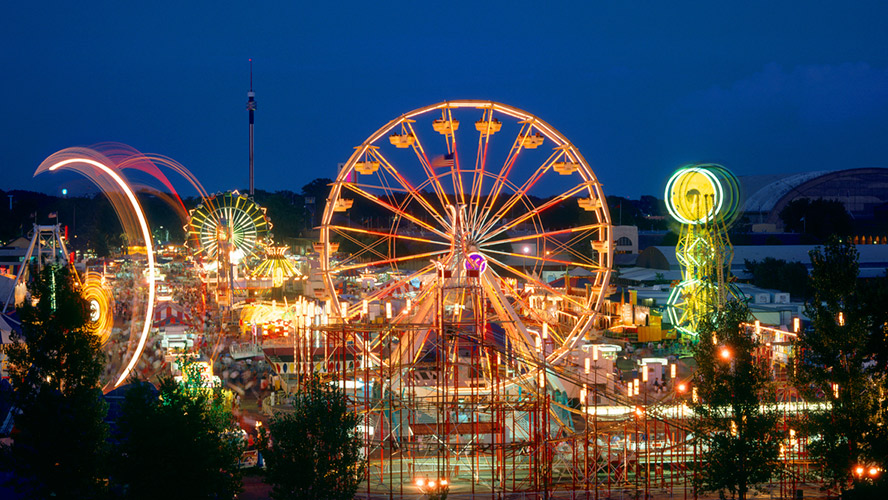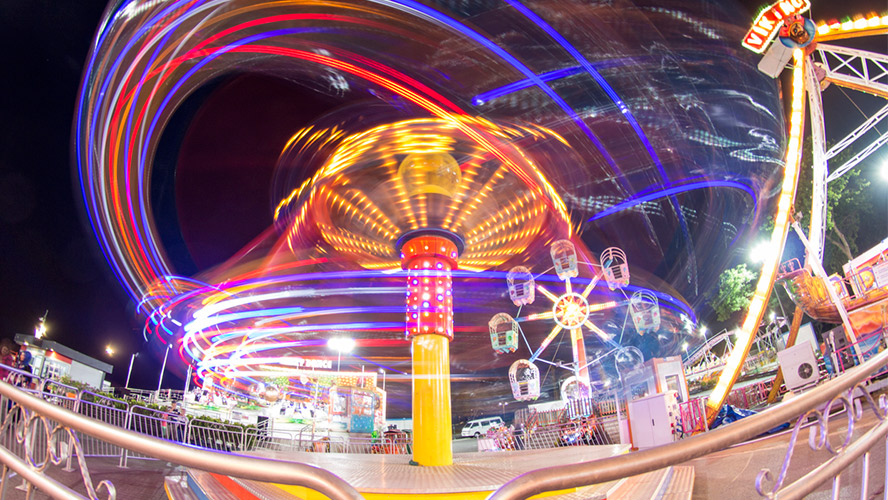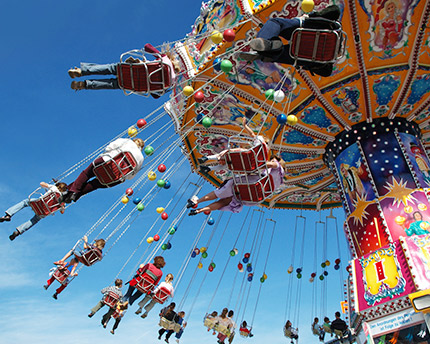Hamburg has all kinds of attractions for visitors, some of them surprising. One of those is the Hamburger Dom fair, one of Germany’s biggest and most popular festivals, which is celebrated three times a year.
You have probably heard about the famous Christmas markets held in towns and cities throughout Germany. But you may not have thought of going to a German fair, with fairground attractions such as Ferris wheels, helter-skelters, and more. But when you’ve read a little about the Hamburger Dom, perhaps you’ll change your mind, and aim to visit Germany’s second city for a day or two longer than you had intended.
If you are one of those people who thought Munich’s Oktoberfest was something unique, you’ll find an interesting alternative in Hamburger Dom. In this article, we look at what Hamburger Dom is, how it originated, when to go, and what you will find there.
The History of Hamburger Dom
Hamburger Dom forms part of Germany’s folklore. But its origins and history are far removed from the festival now celebrated in the famous Sankt Pauli neighbourhood. Let’s travel back in time. In German, ‘Dom’ means ‘cathedral’. And it all began there, in the old Cathedral of Saint Mary, the Hamburger Mariendom (which no longer exists) when, in the eleventh century, a group of merchants, craftsmen and jugglers took shelter in the cathedral from the bad weather.
This mundane anecdote was the seed that, down the centuries, would grow into the festival we know today. As the years went by, that group of people seeking refuge from the adverse weather conditions started a medieval market on the cathedral’s premises. In 1334, the market was banned by the then archbishop, drawing protests from the parishioners who, in 1337, succeeded in getting the ban lifted for periods of bad weather.
After the cathedral was demolished in 1807, the market took place in various locations until it settled in 1893 at Heiligengeistfeld, a large space in the Sankt Pauli neighbourhood.
Where it continues to this day, having established a reputation as one of Germany’s biggest and best volksfest.
When is the Hamburger Dom festival held?
The Hamburger Dom fair takes places three times a year: in winter (Winterdom), in spring (Frühlingsdom), and in summer (Sommerdom). It lasts for a month each time, and is Germany’s longest Volksfest. The winter fair takes place over 30 days in the months of November and December. The spring fair is in March-April, and the summer fair is held for 30 days in July-August.

Although originally the winter fair was the only one taking place, the summer and spring fairs were added in 1947 and 1948 respectively (after the Second World War).
As we have already said, Hamburger Dom is held in the Heiligengeistfeld, an open space that has been the site of everything from executions by firing squad and burning to sporting events. The festival site lies in the heart of the Sankt Pauli district, one of Europe’s red-light neighbourhoods, where the Beatles played in their early days. Its emblem is Sankt Pauli FC, a football team with a firm anti-discriminatory, anti-racist, and anti-fascist commitment.
Attractions and fun for adults and children
Hamburger Dom is a festival offering myriad choices for fun, art and gastronomy. On the one hand, it is a small funfair, similar to those you can find during the summer in any Spanish city. There are Ferris wheels, helter-skelters, carousels, Viking boats, space rockets, shooting ranges, and countless other attractions for both adults and children. There are also hot-air balloons, bumper cars, and soft play areas designed for the youngest children.
The Hamburger Dom site covers over 150,000 metres, packed with pure, adrenaline-fuelled fun.

Not forgetting the gastronomy. Scattered throughout the fair are over 100 food stalls and bars. Sausages, beer, mulled wine and other German gastronomical delights abound.
On the other hand however, Hamburger Dom is also a place for performing artists, who take advantage of the crowds to give performances that make the festival come alive. Just one seasonal fair can see performances by over 250 artists of all kinds, who are there for the 30 days of the event.
Where to stay in Hamburg
Hamburg is Germany’s second-largest city, so to get the maximum enjoyment from your stay, it is important to find accommodation in a good location. A splendid option is the Barceló Hamburg, a four-star hotel built in an avant-garde style in the centre of Hamburg, very close to the Kuntshalle, the railway station, and the Town Hall.
The Barceló Hamburg has 193 spacious B-rooms in various categories. The hotel also has an excellent restaurant, the 1700 — which combines Spanish and German cuisine, together with a fabulous wine list. Another great feature of this hotel is its terrace, the perfect spot for an evening drink.







































































